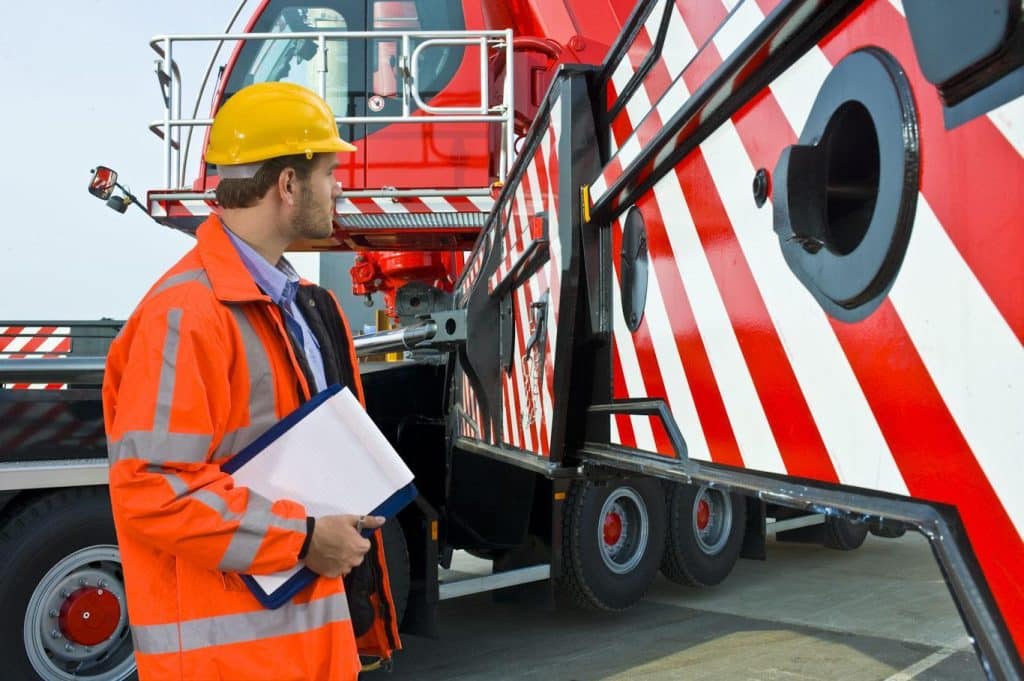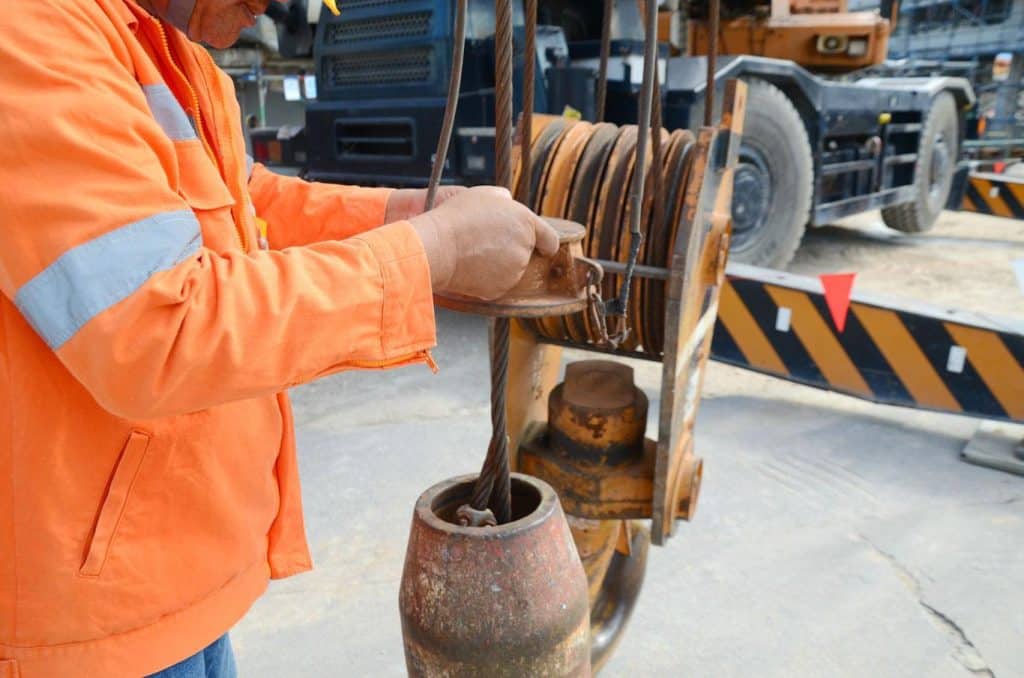
Daily mobile crane inspection is critical to crane safety. You may be the most qualified mobile crane inspector in your country. Still, without a thorough understanding of how to perform inspections, you will not get the job done. That’s where this article comes in. It will cover 11 tips for fast, efficient, and comprehensive mobile crane inspections.
Daily mobile crane safety audits are essential for safe crane operation management. By following the guidelines in this article, you can be sure that your mobile crane is safe for use.
It is essential to remember that mobile crane pre-use inspections are a regulatory requirement and a crucial part of equipment safety. The following tips will help you get the most comprehensive mobile crane inspection possible without sacrificing quality and improving efficiency at the same time.
Perform Daily Mobile Crane Inspections With A Checklist
When working with equipment as complicated as a mobile crane, operators have enough on their minds given the scope of work. Managing your crane operators’ safety can quickly escalate out of control if you aren’t careful.
Maintaining a procedure for daily mobile crane inspections that includes an itemized checklist for safety audits ensures operators don’t neglect any particular inspection components. Similarly, a checklist helps prevent skipping over items that might not be in the spotlight of the operator’s mind.
Checklists are the tool of inspectors to aid in remembering all the facets and items of complicated procedures, inspections, or other similar processes.
Never Perform Inspections In The Dark
We aren’t always controlling when our teams must start or finish their day. Often team members, clients, or even trade partners will spring things on us at the last moment. Some worksites may even have strict requirements about getting started at an ungodly hour of the day.
When your team members inspect mobile equipment like a mobile crane in the dark, they risk missing something vital.
Always strive to have teams that work with equipment that requires daily inspections to inspect the equipment in well-lit areas. You may need your team to line up vehicles to provide headlight lights for a proper mobile crane inspection. No matter the circumstance, you must provide your team with the tools they need to perform safely – and that can include lighting up their lives with light.
Only Allow Operators To Perform The Daily Mobile Crane Inspection

One of the biggest mistakes equipment managers make is allowing someone to inspect the equipment before someone else uses the equipment. By nature of mobile crane operator training, the operator is the best equipped to perform a daily safety inspection. That is, aside from the mechanics trained to repair that same equipment.
In many jurisdictions, it is mandated that the equipment operator perform the pre-use inspection. In fact, this is already law in many countries with industries like logistics where truck drivers must inspect their vehicle via a daily vehicle inspection log.
Use All Five Senses When Inspecting Mobile Cranes

Performing a daily mobile crane inspection before use is vital. And to perform the inspection properly, an operator must employ all their senses. No operator should wear things like headphones or other sense-impeding items. The assessment should take place in a calm and quiet environment.
For example, a peaceful environment allows an operator to hear subtle sounds that might give away an issue – like the hissing of a leaking air line. During an inspection, using all five senses is vital to catching problems that the operator might otherwise overlook.
Inspect Mobile Cranes At The End Of The Day, Too
Although not legally required in most areas, an inspection of mobile crane equipment after use is sometimes as essential as a pre-use inspection. Why? Because it offers the opportunity to repair equipment after use, rather than finding out before use that a required repair will stop work. It is often easier to fix equipment given a bit of time shelter rather than scrambling to fix equipment when needed.
Moreover, operators may notice a part wearing or acting oddly during operation. A subtle change in function may not affect the workflow, but it may be enough to catch the operator’s attention. In this case, a pre-emptive repair may be possible if an operator were to perform a quick inspection at the end of a shift and note any irregularities that were noticed during use but not in the pre-use examination.
Remember Not To Rush Your Mobile Crane Inspection; It’s Essential For Safety

Managing a team at a job site, and you’ll soon learn that deadlines can be a challenge. Weather, equipment breakdowns, and life’s other wrenches can be thrown into your work gears at any moment, as you are well aware.
It can be pretty tempting to rush your equipment operators out the door and off to work. However, be mindful that rushing through a safety inspection often triggers the very problems we are trying to avoid – hazards to workplace safety.
Have Spare Parts Handy In Case You Need Them During Your Inspection
We don’t recommend that crane operators start performing any complex repair to the equipment. However, certain items are wise to keep on hand for daily safety inspections.
First and foremost is the practice of keeping extra copies of a Mobile Crane Inspection Checklist. Doing so will allow your operators the peace of mind of knowing that if they make a mistake (like dropping the checklist in mud), there is a backup plan for their daily pre-use equipment inspection.
Similarly, it’s a great idea to keep extra bulbs and fuses for any equipment used or tested. A mobile crane could blow a fuse as simply as your car at home could. Keep a few extra standard fuses and bulbs around, just in case.
Request Operator And Assistant Presence During Daily Mobile Crane Inspections
Performing safety audits on mobile cranes is not always an easy task – especially for a single individual. Utilizing the help of an assistant can expedite the safety audit. For example, it is much easier to have one person outside acting as a visual spotter when checking signal lights. At the same time, the other operates the controls in-cab.
Similarly, it is wise to maintain extra personnel on-site when cranes are involved merely for the case of potential emergency rescue. If you don’t have one, ensure you have an emergency action plan on hand for crane-related emergencies.
Never Cut Corners, Even If Someone Completed A Report Yesterday
If there’s one problem with daily equipment use, it’s the potential for operators to dismiss aspects of safety due to familiarity with the equipment.
They say that the majority of vehicle accidents happen close to home. There’s a reason for that. Familiarity breeds complacency. When we expect certain familiarities, we lose perspective.
Similarly, when equipment operators perform daily mobile crane inspections, they tend to skip through the inspection for the sake of saving time. They will feel confident that their equipment has not changed condition from the day before. However, this blind acceptance of equipment conditions is a big problem, and not just for crane operating companies.
Maintaining a strong culture of workplace safety is essential to stop and prevent operator safety inspections from occurring in a rushed environment. Remember, safety is everyone’s business, and it might just be your life that’s at risk – so don’t let your team equipment operators cut corners on their safety inspections. Rushing is never worth someone’s life.
A Picture Speaks A Thousand Words

Performing daily equipment inspections is one thing; properly communicating issues or equipment irregularities is entirely something else. What if an operator does not know the technical term for a damaged part? How best to frame the issue, if not by taking a photo?
Now we see the conundrum: If using a paper checklist, how do we take a picture of the damage or record the sound of an engine in need of repair? Let’s look at our final tip for the answer to that question.
Use A Digital Reporting Solution
Technology has come a long way since we first used paper and printers. Aside from the printer’s seemingly endless advancements (from paper to three-dimensional object printing), the printer itself has seen the rise and fall of its own advancement. And now it’s potential demise due to digital forms, templates, and other documents.
In truth, the printed paper checklist is a thing of the past.
The solution for your daily mobile equipment inspections might be vibrating on your desk right now – using a smartphone or other technology instead of a paper checklist.
Digital reporting solutions like the 1st Reporting app provide answers to the millennium-old use of paper. They are the leading edge of the inception of mobile form automation technology – and they are changing the ways managers handle their inspections, audits, even procedures.
Digital reporting using a mobile app allows your operators to complete the same checklist they would on paper for their daily mobile crane inspection. However, it provides several exclusive and inclusive benefits that a paper form cannot compete with:
Automate notifications – so you know the moment your operators complete an inspection
Generate reports – paper reports can’t sift through data and generate reports based on the information submitted. Still, a versatile mobile form automation solution like 1st sure can!
Share instantly – fax is dead. It’s not like your equipment operators carried around fax machines anyway. Well, paper forms aren’t getting to your desk until delivered. But a reporting application like 1st Reporting allows anyone granted permission in the system to access reports the moment they are completed and uploaded to the cloud.
With so many clear benefits to automating your inspection processes with mobile technology, it’s no wonder, so many managers are putting 1st to work for them. Try the app today and find out why so many managers turn off their printers – and turn on 1st.